1. Digital Twin Development
In the following document, I detail the most important aspects of creating, developing, and operating a Digital Twin for a Smart Building. I aim to present all this from an economic and corporate management perspective. All briefly.
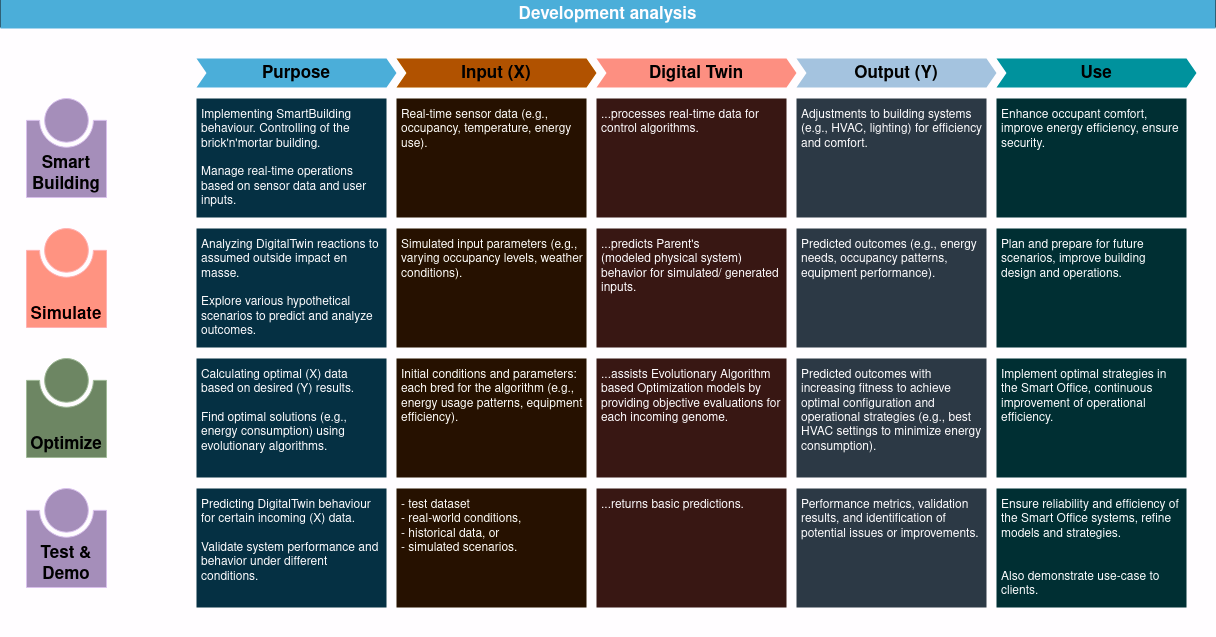
|
|
Based on the infographic, let’s go through the effects and results of developing a Smart Office and a Digital Twin (Twin). We will examine these step by step after the illustrations. |
|
|
In our classification, the Digital Twin is a subset of Smart Building development, but as a standalone entity, it can also be interpreted as part of other technologies (Optimization, Simulations). |
2. Basic Definitions
It is worth following the infographics while reading.
2.1. Digital Twin
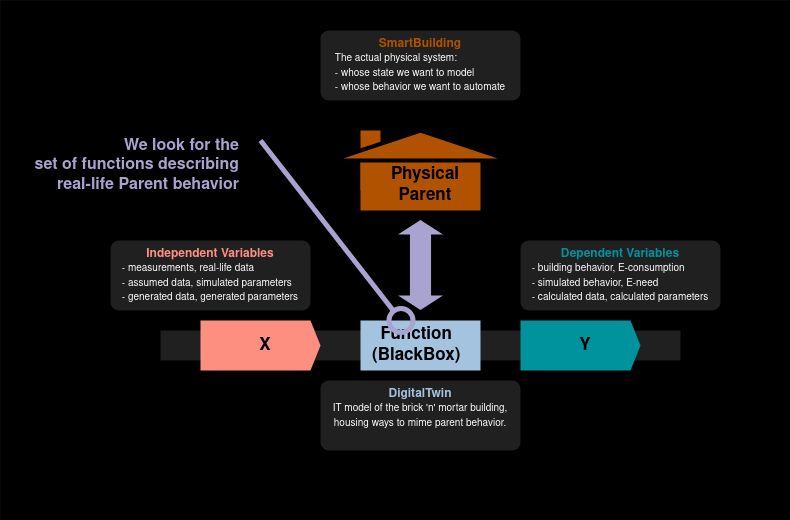
2.1.1. Definition
The Twin associated with the building is an accurate digital representation of the physical realization of the building, its systems, and operations, including the building’s geometry; mechanical, electrical, and electronic systems, as well as its condition resulting from usage and external factors. This virtual model is ideally constantly updated with data measured in the building and received from it, which is collected by directly installed sensors or sensors dependent on external entities. Thus, a Twin can reflect the current state of the building in real-time.
This virtual model calculates dependent Y - output - variables based on independent X - input - variables (also called dimensions or genes). In this way, it predicts states. Therefore, the Digital Twin is not just a static database that changes based on external data but a dynamic, complex automaton that constantly updates its internal state.
2.1.2. What is it used for?
A basic building block: it can be excellently used as a component of the following developments, - if the architecture of these developments is optimally designed - practically without modification:
2.1.3. Why should we develop it?
2.2. Smart Building
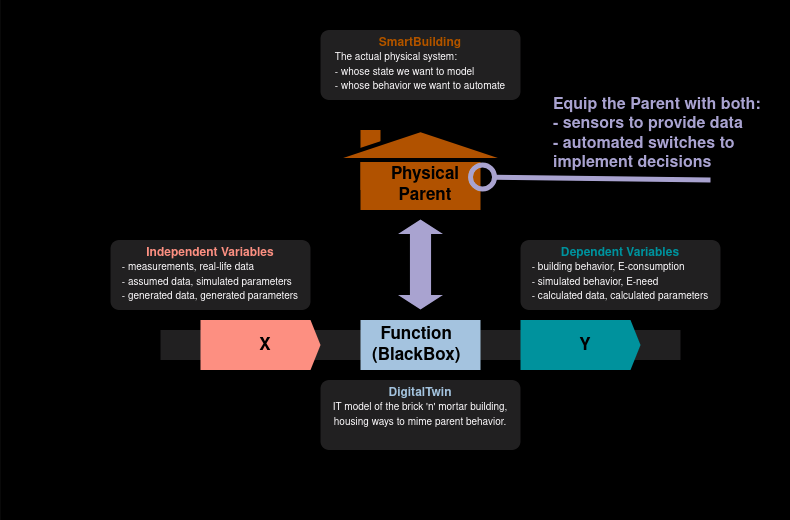
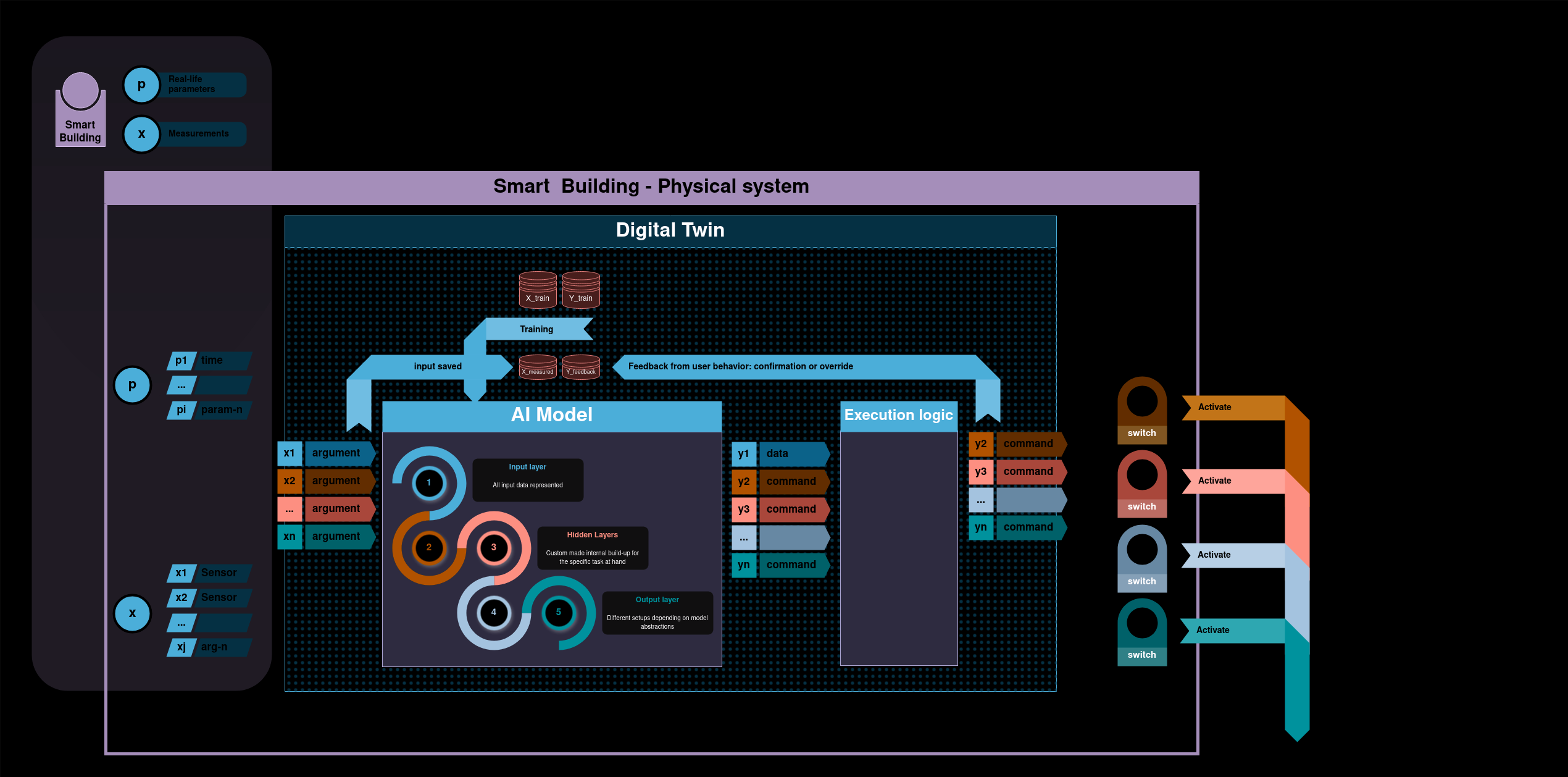
2.2.1. Definition
Smart building: A building equipped with advanced technologies. These technologies allow the building as a system to automatically monitor, control, and optimize its system and operations. This includes the integration of sensors, automation, and data analysis; to improve energy efficiency, comfort, security, and overall operational efficiency. Smart buildings use real-time data (measurements) and intelligent algorithms (e.g., Digital Twin) to adapt to changing conditions and user needs, thereby improving functionality and sustainability.
2.2.2. What is it used for?
A method defined by the User - whether:
-
optimization,
-
test operation,
-
gut feeling -
executes and enforces the selected, preferred behavior automatically in a real-world building.
2.2.3. Why should we develop it?
2.3. Simulation
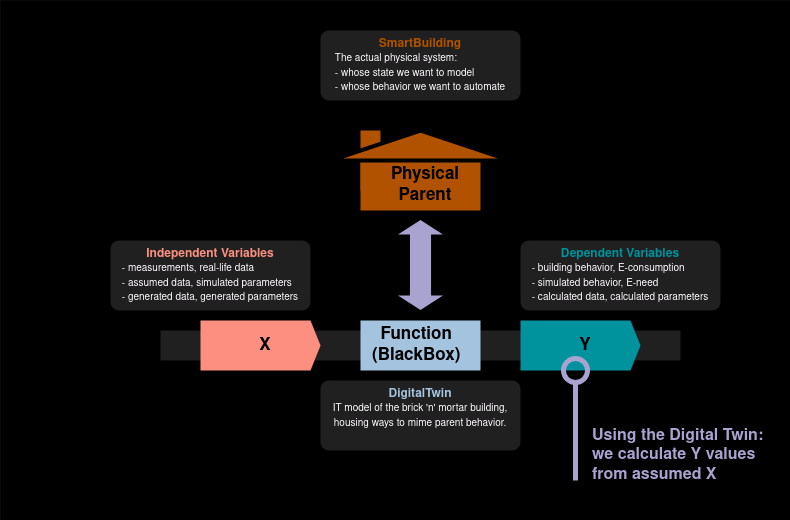
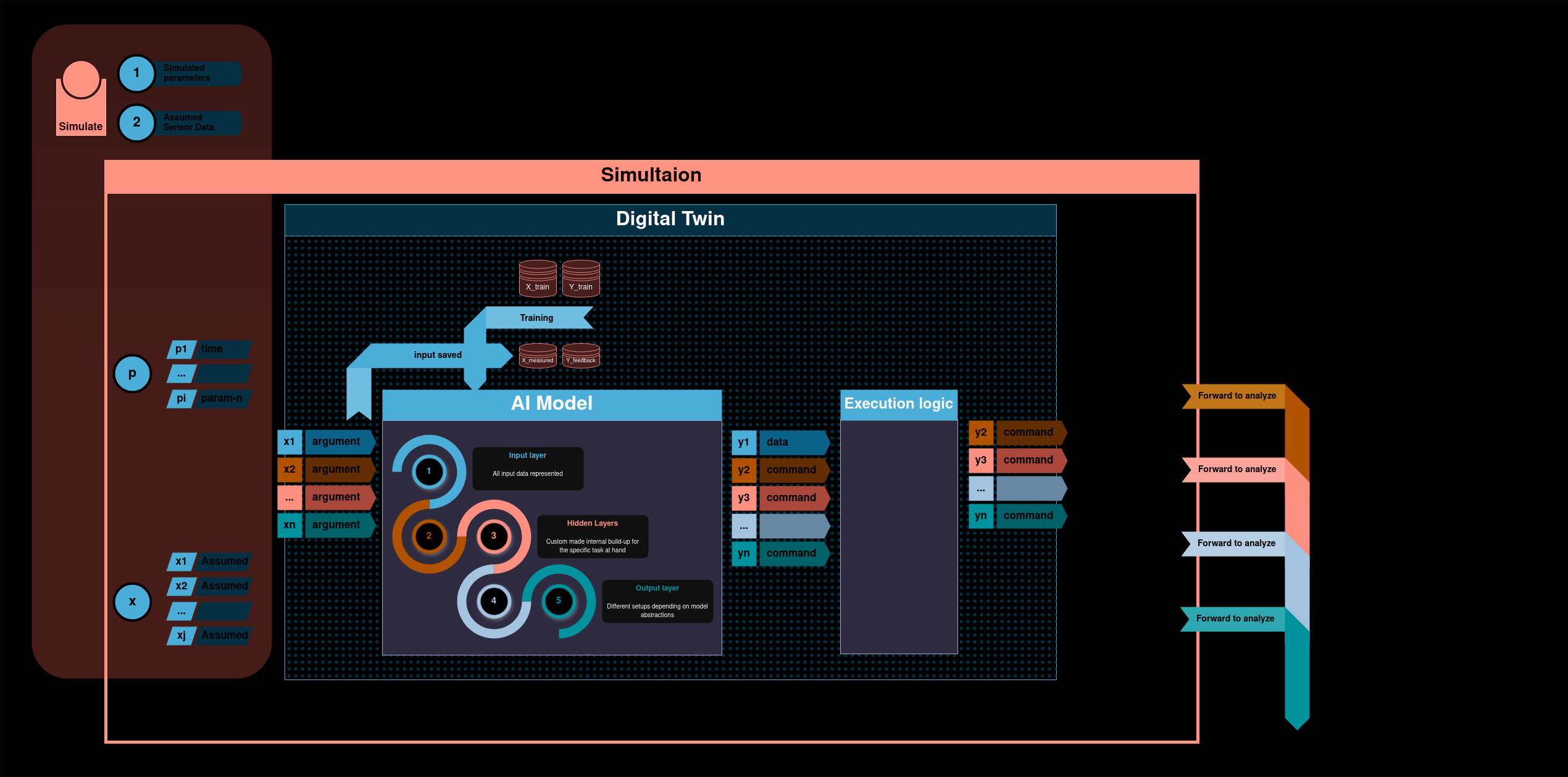
2.3.1. Definition
In the context of digital twins, simulation refers to the process where we replicate and analyze the behavior of a modeled physical asset or system under different conditions using this virtual model. This involves using the digital twin to conduct experiments, predict outputs, and evaluate scenarios by manipulating parameters and observing potential impacts. Simulations help us understand how the real-world asset might respond to changes or stress, allowing for better decision-making and optimization without affecting the actual physical system.
2.3.2. What can we achieve with it?
A method defined by the User - whether:
-
optimization,
-
test operation,
-
gut feeling -
executes or enforces the selected or automatically generated behavior on the digital model made from the real building, and these results can be used further for: - analysis - optimization
2.3.3. Why should we develop it?
2.4. Optimization
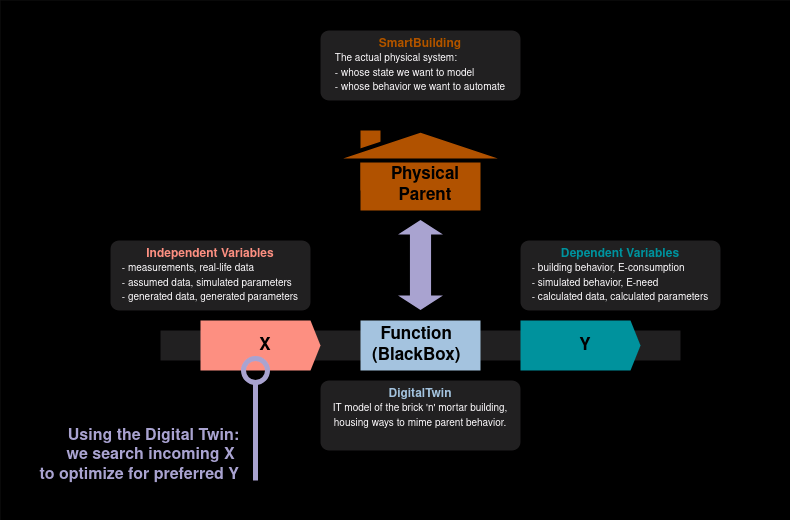
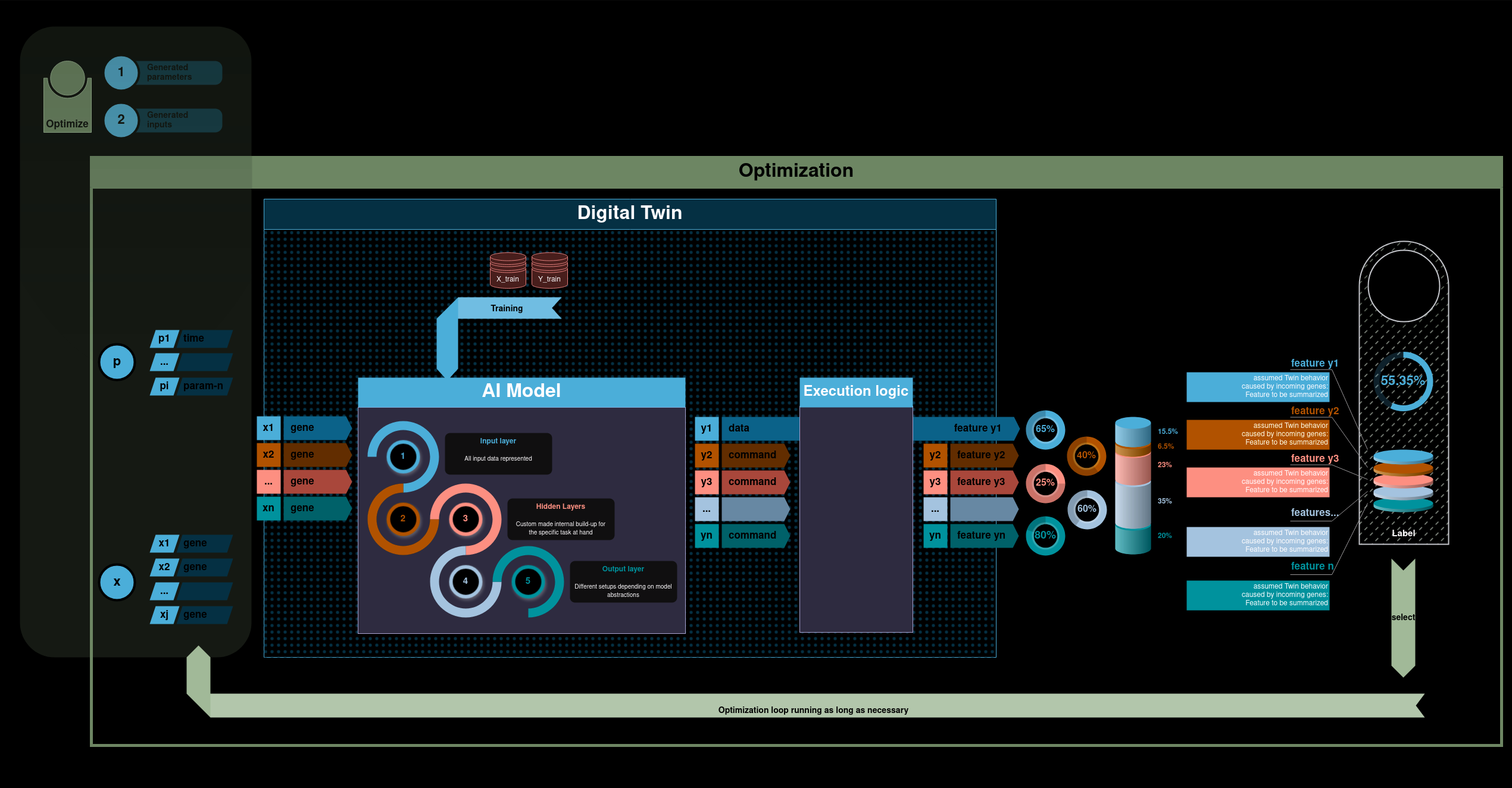
2.4.1. Definition
The evolutionary optimization process using the digital twin involves the iterative refinement of design parameters (gene data) through repeated simulations. The digital twin models and tests these parameters to evaluate their performance (phenotypes). The best-performing solutions are selected, variations are introduced, and the cycle is repeated to improve results. This iterative approach enables the optimization of complex systems by continuously evolving and testing designs in a virtual environment. The goal is to identify the most suitable design configuration.
2.4.2. Operation
-
Gene data: (design parameters) Initial suggestions or intermediate solutions.
-
Digital twin: Calculates output properties (phenotype) from the genes using simulation.
-
Phenotype: Results or performance indicators from the simulations.
-
Optimization cycle: Iteratively evolves and refines design parameters based on simulation results.
-
Goal: Identifying optimal design configurations or settings through virtual testing and feedback.
2.4.3. What can we achieve with it?
Calculating operational parameters leading to the optimal combination of derived data we consider important.
- Energy Efficiency
-
Since the building’s modeled energy demand can be calculated from the Digital Twin based on arbitrary input data, we can determine the behavior needed to achieve Optimal Energy Consumption through Optimization procedures (extreme value search), adjust building settings, and allocate locally produced energy.
- Utilization
-
Based on data from usage, we can propose layout modifications, user behavior changes, traffic redirection, and operational decision scheduling.
- Optimization for arbitrary priorities
-
We can suggest finely tuned input data for any desired state’s optimal extreme value combination.